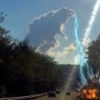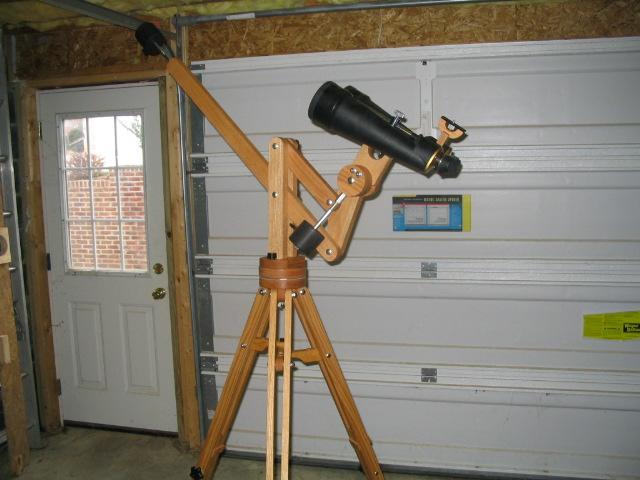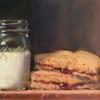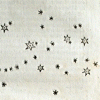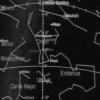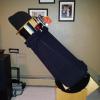
Building a Parallelogram
#1

Posted 04 February 2013 - 11:40 PM
Also, will I be able to use a photography tripod or do I need to pick up a heavy duty one?
I'm not looking for a show piece, just function.
Thanks
#2

Posted 05 February 2013 - 12:09 AM
From experience I would not use regular pine. Too soft. Hard pine is pretty good. I have never used spruce so no idea there. Red oak is a great wood for a binocular mount or a tripod. 1x2 SFS (surfaced four sides) is less than $1 a linear ft at Home Depot and Lowes. There are other good woods such as ash but red oak is just so easily obtained.
#3

Posted 05 February 2013 - 03:10 AM
I'm not so familiar with spruce as we don't tend to see too much of it around here (said with a twang...). I do seem to recall that spruce is stiffer?
Pine would probably be ok so long as you used pieces that are reasonably rigid, and if you are on a budget and have it to hand, why not? Pine is used in many applications.
You could experiment with some pieces of pine or spruce around the lengths you envisage needing, attach some weights and then test over a fulcrum, ie assessing for flex, etc.
Regarding your tripod, you may get away with it if the total load is within its capacity but it will all soon add up, with counterweights, binos and fittings. The other thing to consider is if you think you will move on from your current binos to something bigger and therefore may need a bigger setup. All that said, why not give it a go - parallelograms are fun to use and reasonably easy to make.
Andrew
#4

Posted 05 February 2013 - 05:46 AM
There are few variables involved in designing so we would also like to know if you intend to use only 5# or under or you want HD-type to hold ateast 15# or more.
send me a PM if you need help.
Thanks;
#5

Posted 05 February 2013 - 11:08 AM
#6

Posted 05 February 2013 - 02:15 PM
I used both of those woods for shoulder mounted, rear counterweighted, 8 foot painter's pole ( forward of the observer, so that sitting is possible, with a zenith view) inertially stabilized binocular mounts.
Eurobeech takes boat varnish more uniformly than oak.
Sitka spruce was used in WW II( for the RAF Mosquito
?), and for Howard Hughes' Spruce Goose. It is/was used for sailboat masts.
Pine is somewhat soft and less durable/weaker for the subject applications.
#7

Posted 05 February 2013 - 07:00 PM
Alas,it's aroma is not to everyone's liking in any case,although it can be disguised with copious lashings of creosote.
I once,albeit only momentarily,considered commissioning a cabinet maker to construct a Parallelogram mount for me,from Boxwood,for a Swarovski 8x20 compact binocular,which I detested holding by hand due it's diminutive nature.
The idea came to me moments before awaking from slumber,immediately following which a telephone call distracted my attention,and I never thought about the matter ever again until reading this thread.
Then again,probably approaching 93% of my binocular use is undertaken in the daytime,from relatively remote vantage points accessible only by foot
or bicycle,so the sheer bulk of such a contraption would almost certainly have proven more restrictive than advantageous,particularly for such a tiny instrument as a 20mm. pocket sized compact binocular.
Kenny
#8

Posted 05 February 2013 - 07:24 PM
Thanks again
#9

Posted 06 February 2013 - 09:39 PM
Kenny, I like your dream.
#10

Posted 07 February 2013 - 01:10 AM

thanks,
#12

Posted 29 April 2013 - 09:00 AM
Note that it allows over 180-degrees of pan without having to walk around the tripod. Great for lawn-chair observing. This single feature is worth it's weight in gold, IMO.
These pics show my 20x70mm bino but I recently picked up an Orion 15x70mm Resolux. The parallelogram is more than capable of handling the extra couple of pounds of the all-metal Resolux. The finder mount is a little different. I'll post pics of the new setup when I next get it outdoors. I'm currently building a counterweight for the Resolux, on the altitude arm opposite the binos, but in practice it's not really needed, especially with the light-weight plastic bino pictured.
Commercial wood tripod. The black cone is a fiberglass part I molded to interface the parallelogram with the tripod. Dobsonian Teflon-on-Ebony Star azimuth bearing.
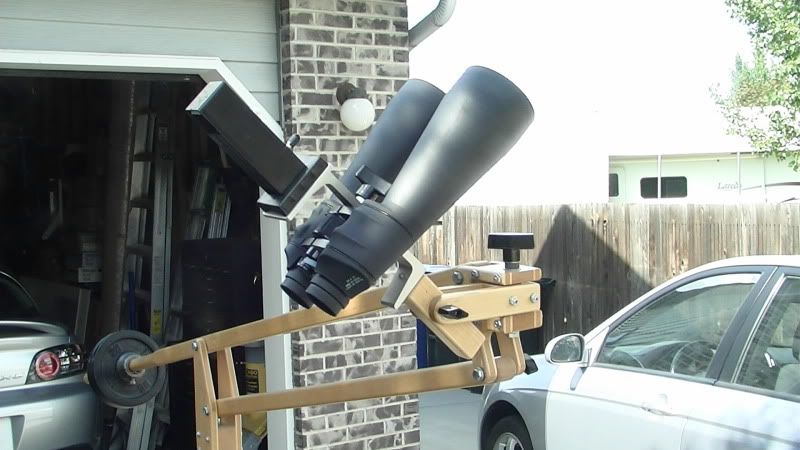
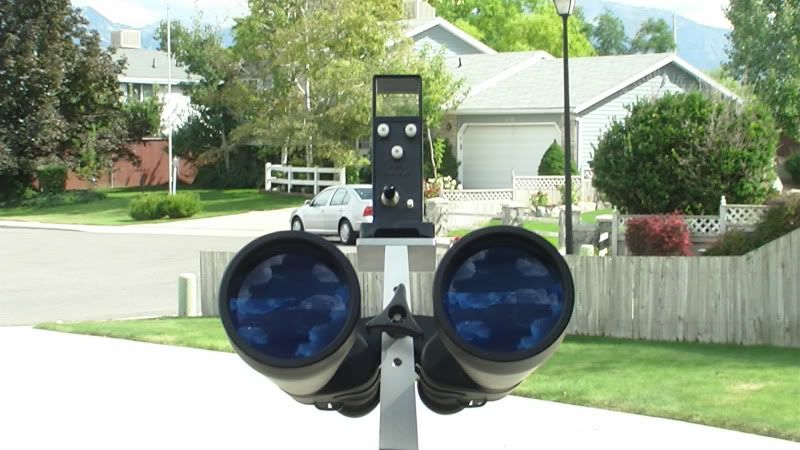
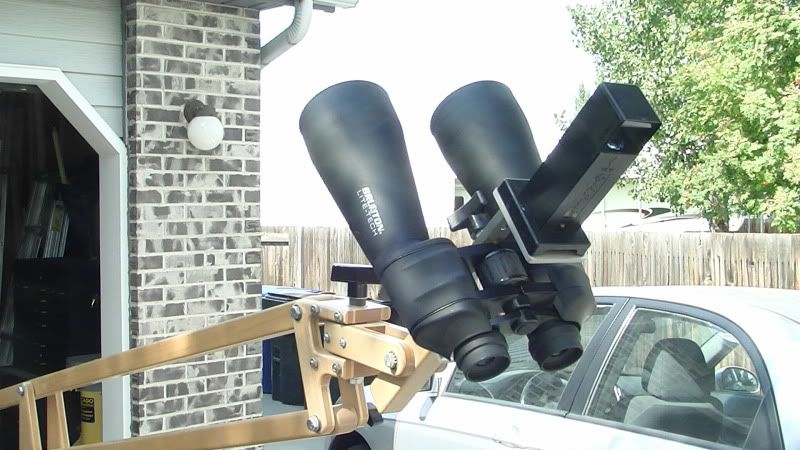
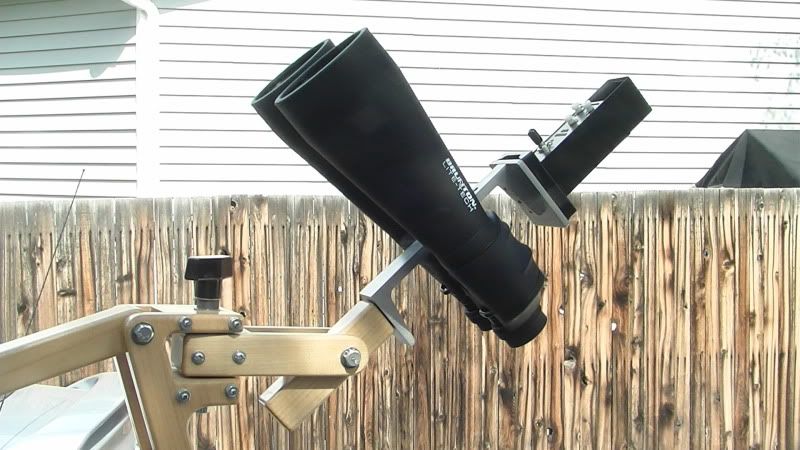
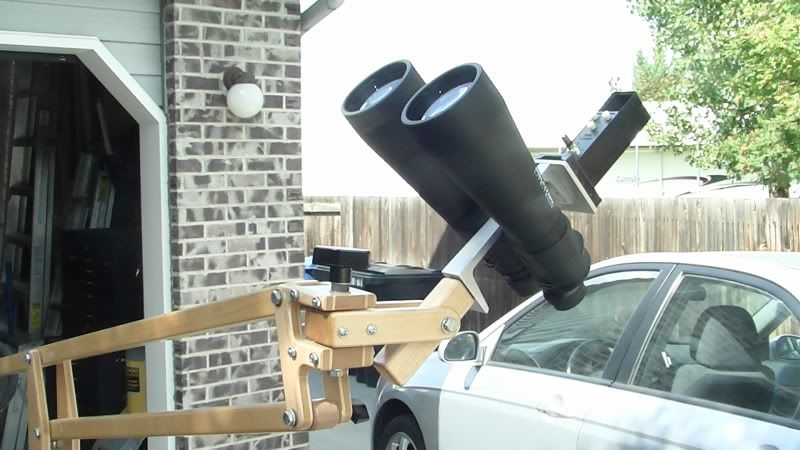
Solar observing set-up, Baader filters in PVC cells.
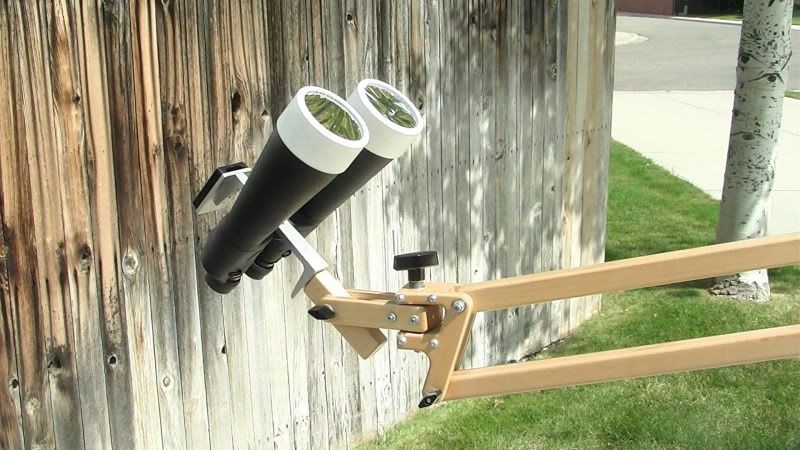
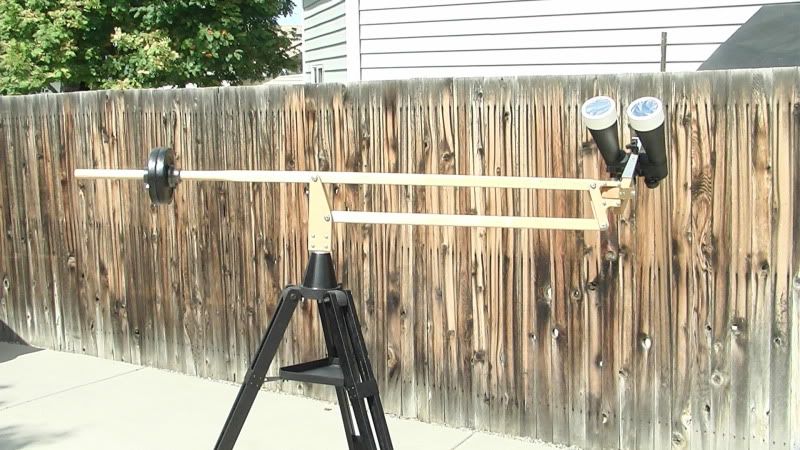
#13

Posted 29 April 2013 - 03:34 PM
A counterweight for the pitch axis would balance there, but add weight, thus requiring a heavier counterweight on the other side of the tripod.
Why not use a sidesaddle arrangement, to make the pitch axis pass through the center of gravity of the binocular plus its supporting half-fork ?
#14

Posted 29 April 2013 - 07:32 PM
The pitch axis looks unbalanced, such that you need to clamp , change the pitch angle, and then reclamp.
A counterweight for the pitch axis would balance there, but add weight, thus requiring a heavier counterweight on the other side of the tripod.
Why not use a sidesaddle arrangement, to make the pitch axis pass through the center of gravity of the binocular plus its supporting half-fork ?
You're right, Gordon, it is unbalanced in pitch and that's exactly what the clamp knob is for. That said, it hasn't been any kind of handicap for 3 lb. binoculars or less. It's rather like using a tripod pan head. Point it, clamp it down. With 50 to 70mm Asian plastic binos up to 20X (such as the Bruntons in the pictures above), it's a non-issue.
This design dates to about 2001 and there are some two dozen of them in use in my area.
I like the compactness of the design, it's easy to look over or around the bino without a large harness in the way.
That said, for binos over about 3 lbs., the balance does become an issue, especially for people without any grip strength to tighten the clamping knob. My 70mm Resolux bino is over 5 lbs. and for that I'm working on a counterweight. Here's a quick snap I took a few minutes ago in the basement workshop. I'm holding it in it's working position since I haven't installed the mounting hardware yet.

It's a steel bar, .75" x 2" x 6". It won't completely counterbalance a heavy bino but will bring it back close enough for comfortable use. A shorter bino C-bracket or L-bracket will help, that's next.
I also plan to shorten the arms by about six inches, which will reduce or eliminate the need for additonal counterweights on the opposite end. They are extremely long now. I built it originally to accomodate up to a 6'-10" tall person without them having to stoop to look straight up, but in practice that has never been needed. My tallest friend is 6'-4" and he has his own paralellogram now.
The new counterweighted version, with shortened arms, should be able to handle most 80mm binos with ease.
I'm working on a larger, 3-arm version for my 25x100mm binos, but the pitch (altitude) mechanism is much like my "Weightless" mount for refractors (S&T, Oct. 00) and will be in balance in all orientations without counterweights.
Stay tuned!
#15

Posted 13 January 2014 - 11:14 AM
I also am using Red Oak for this build instead of Pine or Spruce.
Thanks
#16

Posted 13 January 2014 - 12:48 PM
#17

Posted 13 January 2014 - 06:43 PM
You can preload axially with Belleville washers or 2-wave or 3-wave spring washers.
#18

Posted 13 January 2014 - 08:21 PM
#19

Posted 13 January 2014 - 08:23 PM
Thanks again
Tag
#20

Posted 13 January 2014 - 08:52 PM
#21

Posted 13 January 2014 - 10:43 PM
Any ideas would be appreciated.
Thanks
#22

Posted 13 January 2014 - 11:39 PM
Thanks
#23

Posted 14 January 2014 - 02:37 AM
If convenient, use fine thread pitches , such as 1/4-28. Fine pitches allow finer adjustment of friction, and the bolts are stronger, though bending or shear or axial stresses in a p-mount are far below what the bolts can withstand.
#24

Posted 14 January 2014 - 06:19 AM
#25

Posted 14 January 2014 - 01:52 PM
If you do not have hand files to smooth the saw cut edges and round the sharp corners, it is possible to rub off most of the roughness against the concrete of a sidewalk, driveway, etc. . That technique helps to avoid hand or upholstery damage in transport from the seller, and to make the storage of aluminum stock hand friendly and gloveless.
But a good, sharp, new file is easy to find.






